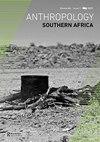A meeting with gardenia: an ethnographic exploration of multispecies relationships and space construction in Kirstenbosch National Botanical Garden
IF 0.9
3区 社会学
Q3 ANTHROPOLOGY
引用次数: 0
Abstract
In an age of climate and ecological breakdown, questions of how we relate to the natural world and the more-than-human beings around us are more important than ever. This ethnography seeks to bring these questions to the Kirstenbosch National Botanical Garden in Cape Town, South Africa, a place known for its conservation and tourism value, by taking an experimental multispecies approach. Multispecies ethnography is particularly useful for these types of explorations as it allows the stories of the more-than-human to emerge from the periphery and be put in conversation with the human. This ethnography found that despite Kirstenbosch’s socioecological benefits, the intimacy fostered between humans and more-than-humans in the gardens is distinctly human-centric and centres on a colonial construction of nature and natural beauty. Practices of photography and viewing and the commercialisation of the gardens reinforce such a relationship, producing a space where human needs and desires are prioritised and the boundary between humans and more-than-humans reified. This multispecies approach to human–environment interactions highlights the potential failures of western conservation practices and contributes to the growing exploration of complex human–nature relationships in ways that are deeper and kinder and that recognise nature’s agency and animacy in the Anthropocene.与栀子花的邂逅:对克尔斯滕博什国家植物园多物种关系和空间构建的人种学探索
在气候和生态崩溃的时代,我们如何与自然世界以及我们周围比人类更重要的生物相处的问题比以往任何时候都更加重要。南非开普敦的克尔斯滕博什国家植物园以其保护和旅游价值而闻名,本民族志试图通过实验性的多物种方法将这些问题带入该植物园。多物种人种学对于这类探索特别有用,因为它可以让 "非人类 "的故事从外围浮现出来,并与 "人类 "进行对话。这项人种学研究发现,尽管克尔斯滕博斯的社会生态效益很好,但花园中人类与 "非人类 "之间的亲密关系明显是以人为中心的,其核心是对自然和自然美的殖民建构。摄影和观赏实践以及花园的商业化强化了这种关系,创造了一个优先考虑人类需求和欲望的空间,并重新确认了人类与 "非人类 "之间的界限。这种人类与环境互动的多物种方法凸显了西方保护实践的潜在失败,有助于以更深入、更友好的方式不断探索复杂的人与自然关系,并承认自然在人类世中的能动性和灵性。
本文章由计算机程序翻译,如有差异,请以英文原文为准。
求助全文
约1分钟内获得全文
求助全文

 求助内容:
求助内容: 应助结果提醒方式:
应助结果提醒方式:


